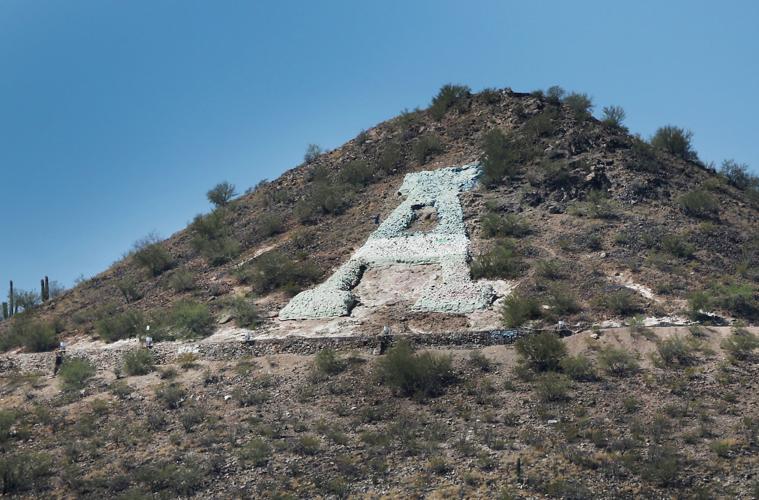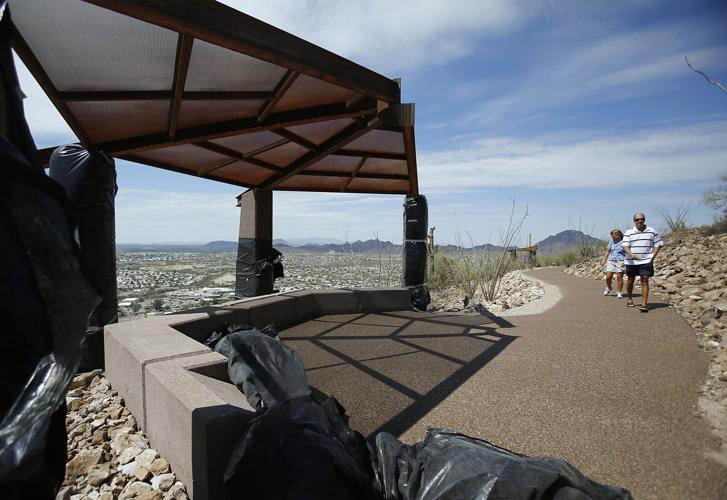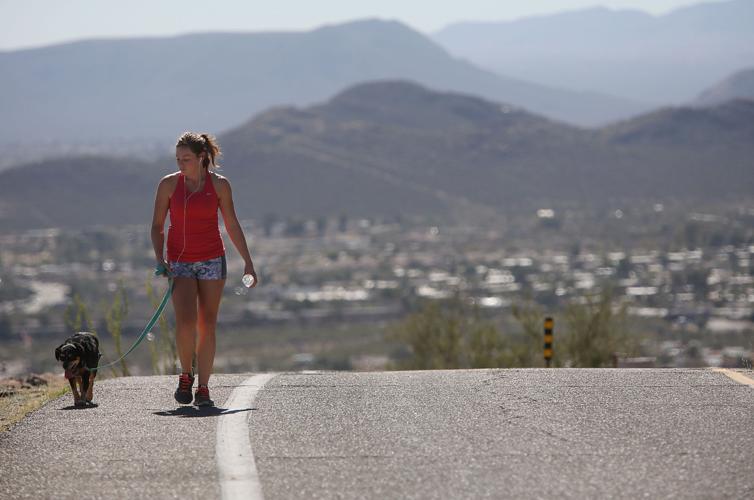And the survey says?
Well, that all depends on how Tucsonans answer a survey asking our thoughts on the Sentinel Peak Park master plan. There’s been an effort afoot, in the past seven years, to map out enhancements for the emblematic west-side hill with more recreational amenities — biking and walking paths, potable water, compost toilets, interpretive signs and shaded rest areas.
The vision of the plan’s supporters is to improve the 378-acre urban park to give us more opportunities to enjoy and appreciate the natural beauty of Tucson.
Sentinel Peak, also known as “A” Mountain, is special to many people for many reasons. The hill and its base are rich in Tucson history. Generations of families have enjoyed the views of the valley. Walkers, joggers and cyclists go up and down daily.
For years, however, the park, which was established in the 1930s, has been ignored. But some Tucsonans, including Ward 1 Councilwoman Regina Romero, dream of a friendlier, more attractive and appealing park that would be used by more people.
“Sentinel Peak Park is the gateway to the Tucson mountains and should be a first stop for every Tucsonan hosting visitors to our city. You can see every mountain range, catch beautiful sunrises and sunsets, see wildlife and take a hike. My hope is that we can create a trailhead and improved trail system that is accessible from the streetcar (at San Agustín Mercado), so we can finally have public transportation to our wild public lands,” wrote Diana Rhoades, co-founder of the Friends of “A” Mountain and a former assistant to Romero.
I filled out the survey. Creating safe, stable walking and bike paths is a no-brainer. For full disclosure, my wife and I live near Sentinel Peak. I grew up in its shadow, went to Cholla High School, which is on the southwestern side of “A” Mountain, and as far as I’m concerned, it’s a gem that Tucson must polish and show off.
Bob Rodriguez, who lives in Menlo Park, one of the neighborhoods surrounding Sentinel Peak, believes that improving it is for everyone’s benefit, not just the residents who live around and near the landmark.
“It’s not just a west-side thing. It’s a Tucson thing,” said Rodriguez, who grew up on the city’s east side but often visited Sentinel Peak, which was near his nana’s house on West Congress Street. “Anyone who loves Tucson, it’s got to be in their heart.”
Currently the process of mapping out improvements is in Phase 2, said Howard Dutt, landscape architect with the city’s Parks and Recreation Department. Dutt has been working with the Friends of “A” Mountain, the Ward 1 office and others on developing a long-range plan.
In the first phase, the city built a handicapped-accessible path from the parking lot to newly built shaded sitting areas at the top. In the next stage the plan would expand walking paths, build a shaded trailhead plaza and picnic area, extend a handicapped-accessible path to the historic stone outlook, and establish walking paths from the base up “A” Mountain.
Several public meetings will be held next month to collect ideas and reaction to the master plan: May 3 at the Fred Archer Center, 1665 S. La Cholla Blvd.; May 10 at El Rio Neighborhood Center, 1390 W. Speedway; and May 17 at the Tucson Parks and Recreation Administration Office, Mesquite Room, 900 S. Randolph Way. The meetings begin at 5:30 p.m.
Residents can fill out the online survey or find printed surveys at all the city’s recreation centers.
The park is underused and underappreciated but a natural draw, said Gene Einfrank, president of the Menlo Park Neighborhood Association.
“If people were directed to the trails, people would use them,” said Einfrank, a frequent visitor to the park. “Any time you can include trail facilities, it’s a good thing.”
The visions, however, are not limited to the park. There are future hopes of connecting Sentinel Peak with its neighbor Tumamoc Hill. The master plan does not currently include connecting trails, but there is a natural synergy between the two cerros, said Benjamin Wilder, interim director of Tumamoc Hill, an 860-acre ecological reserve and U.S. National Historic Landmark owned and operated by the University of Arizona, and a popular site for walkers.
“I see a lot of opportunities for shared programs,” he said.
The potential is real to create a unique urban park. Take the survey. Go to the public meetings. Support Sentinel Peak Park. It’s ours to cherish and protect.








